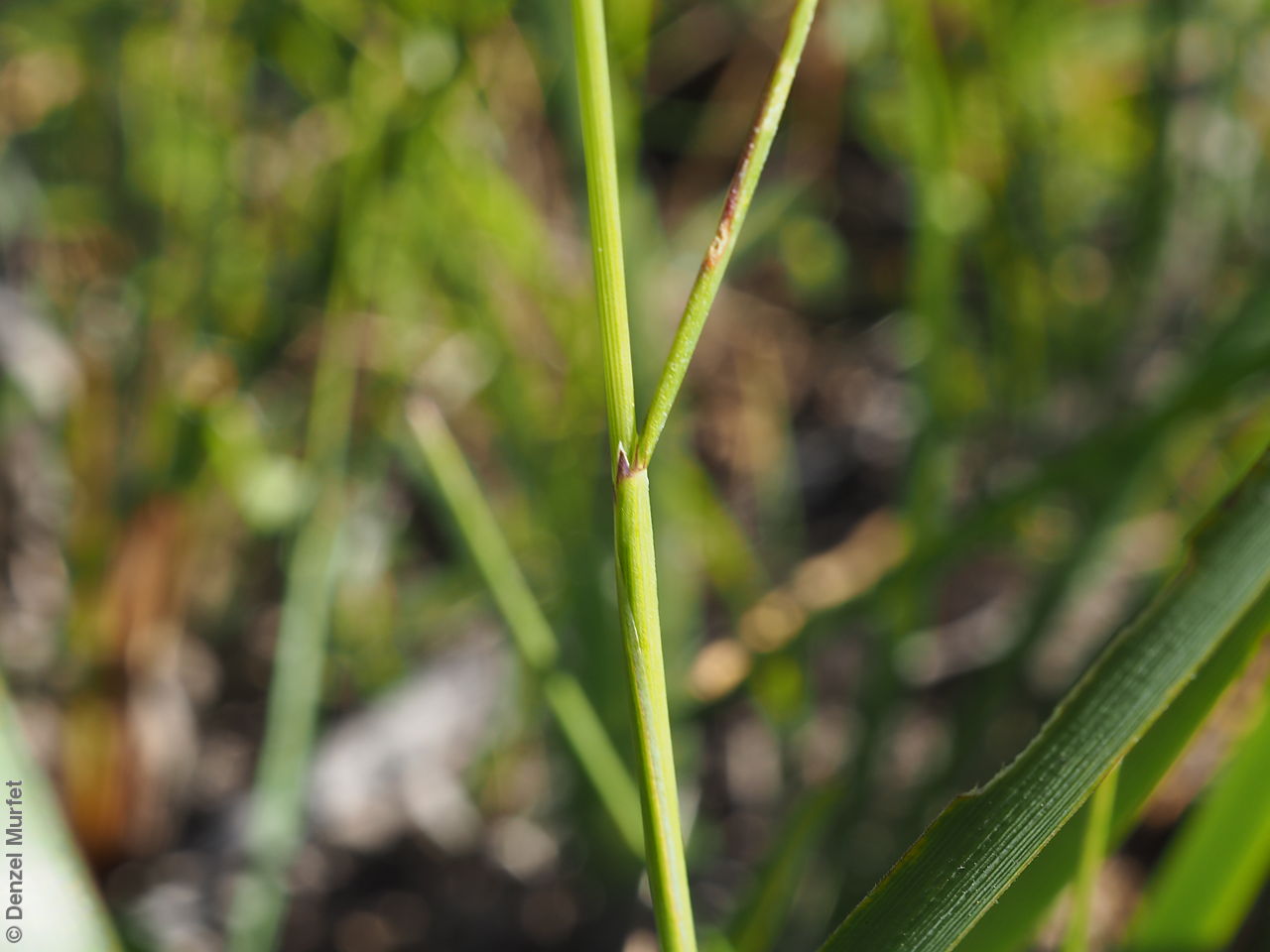
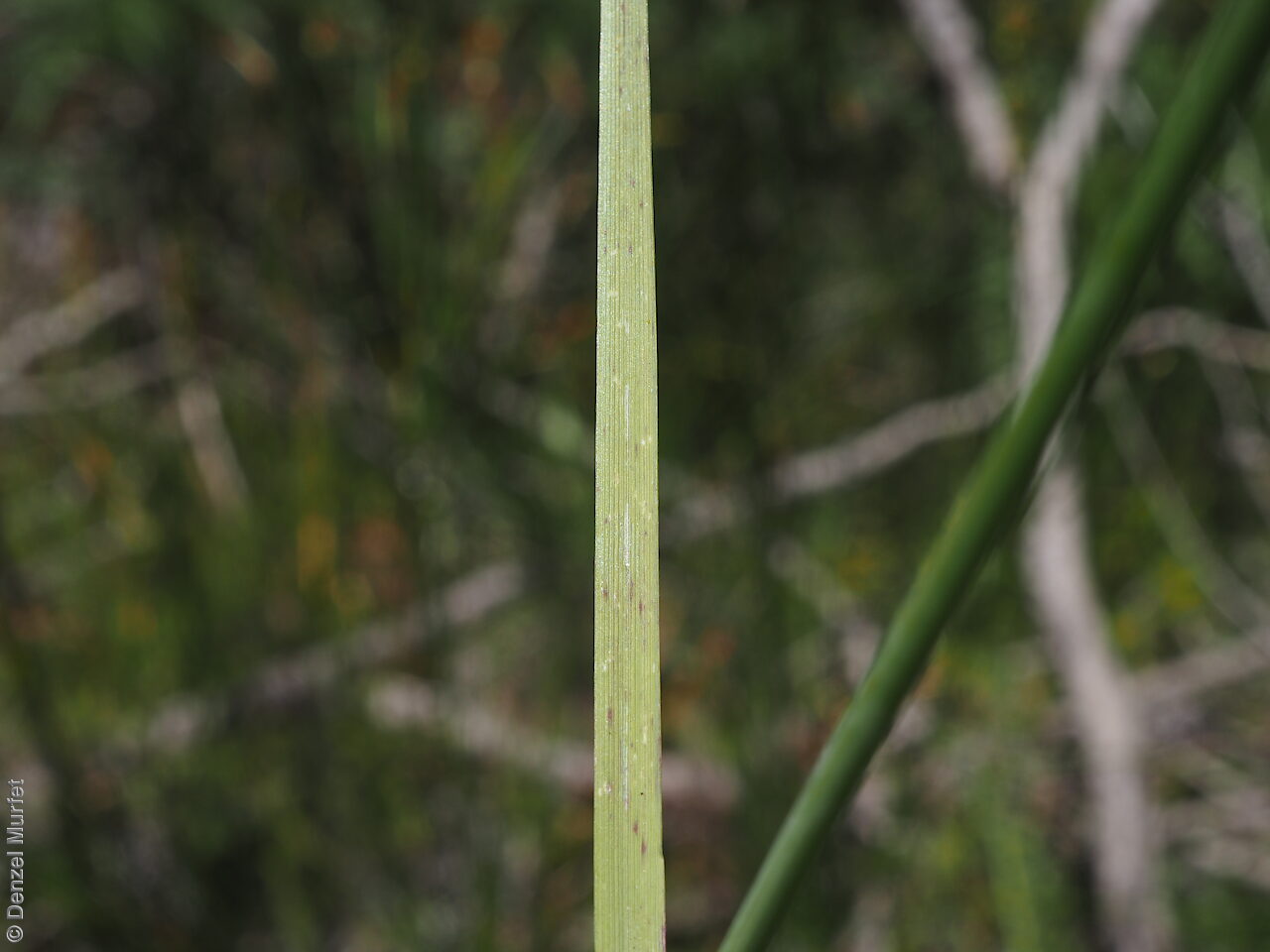
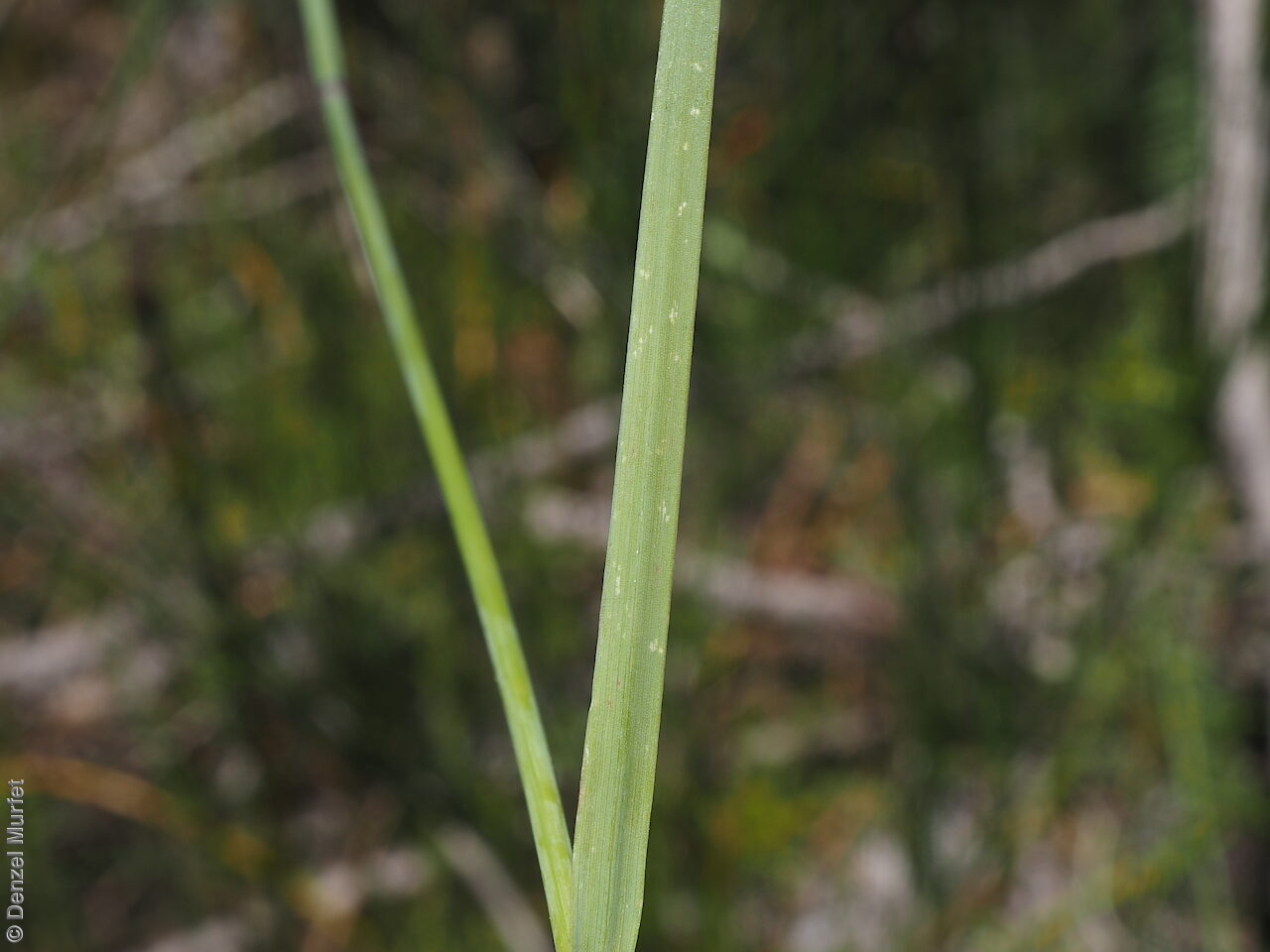
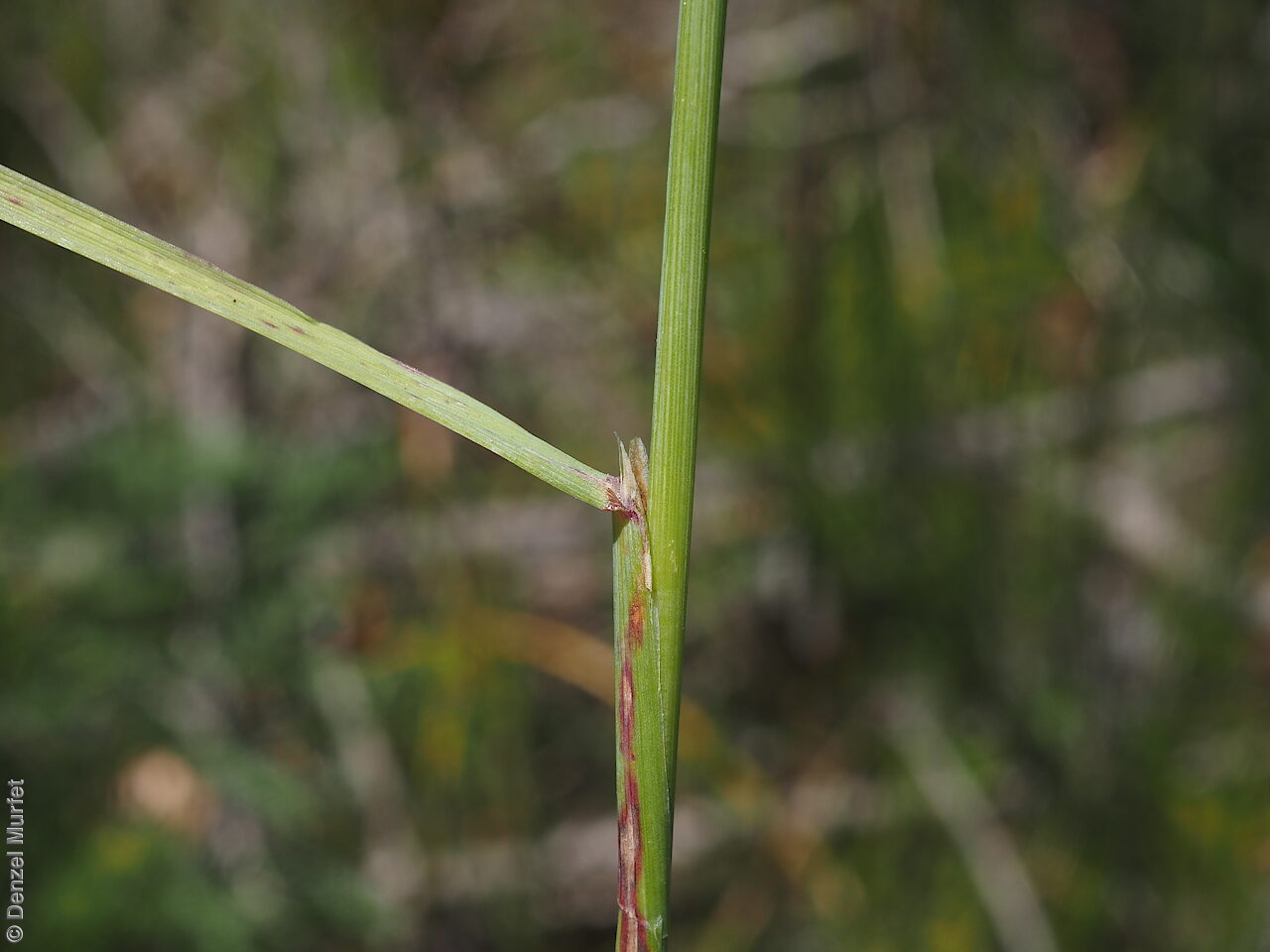
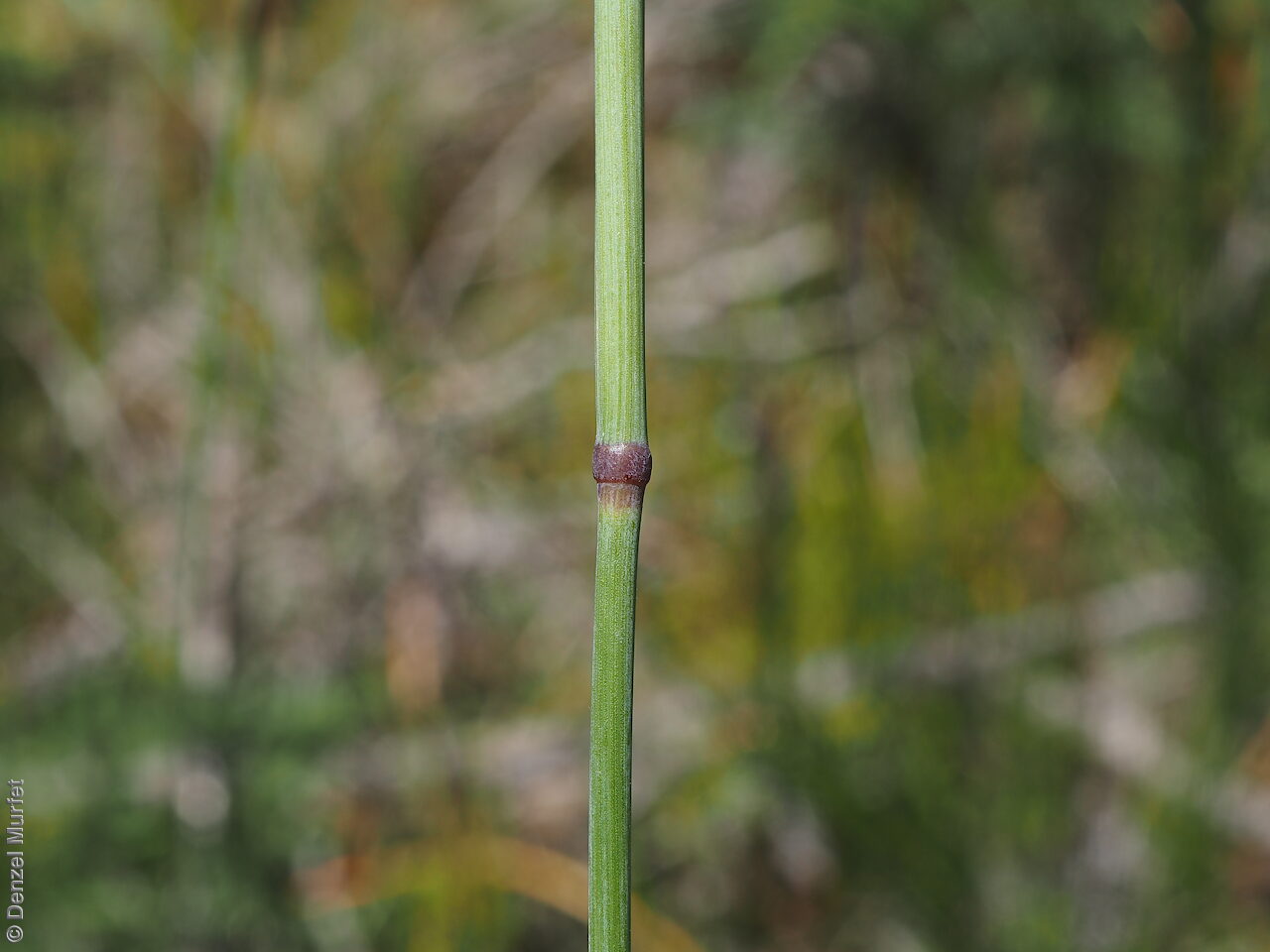
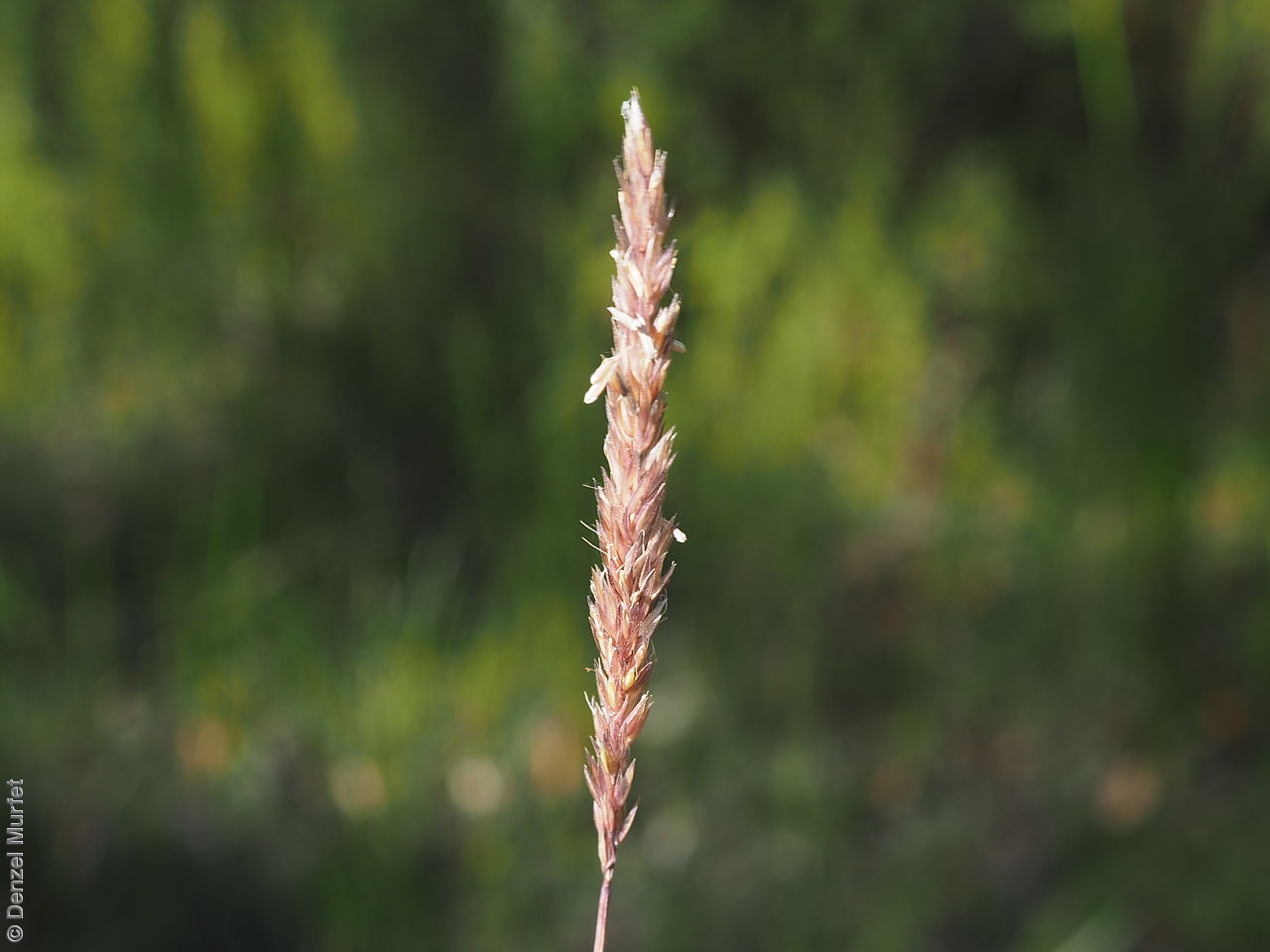
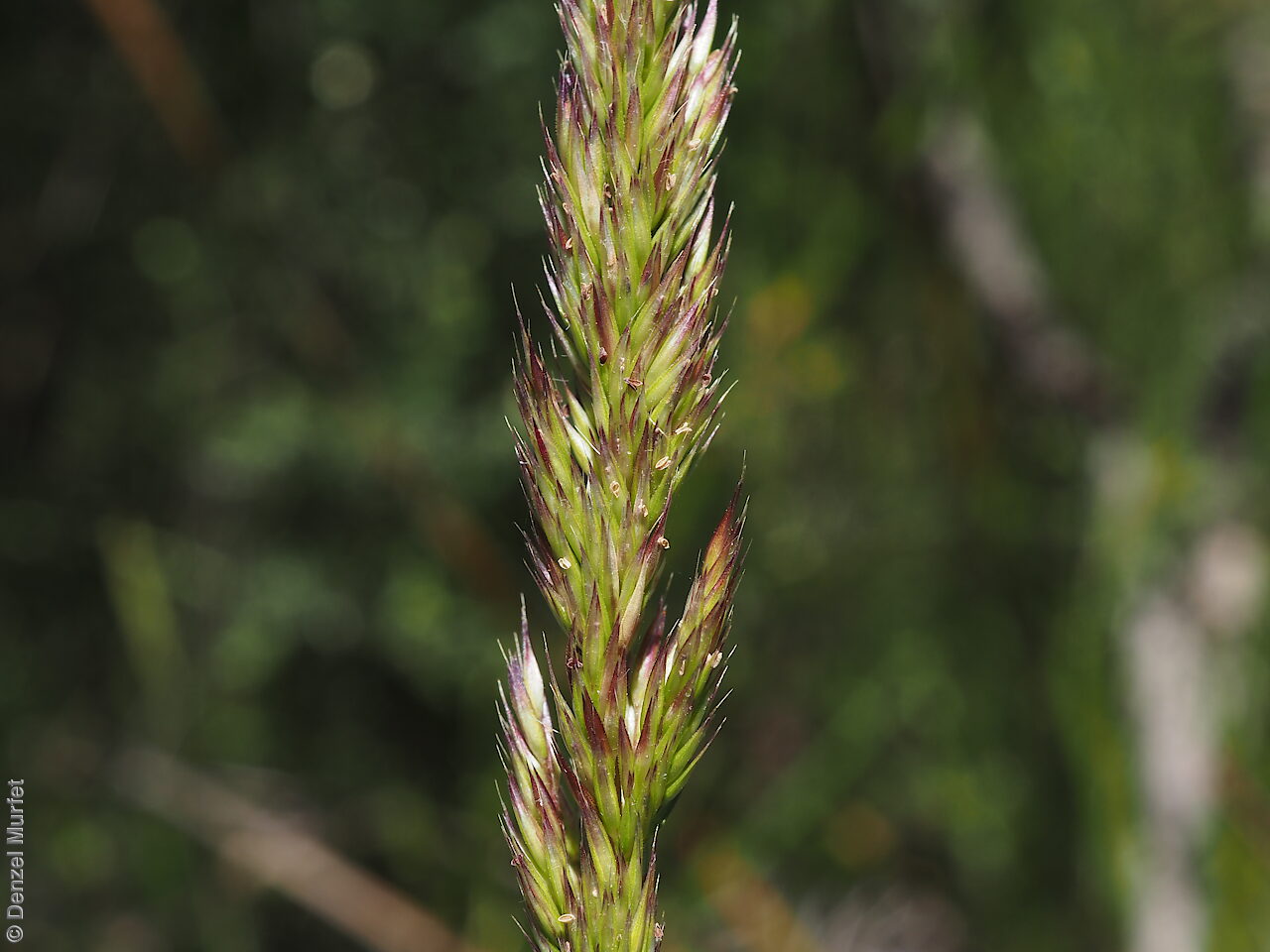
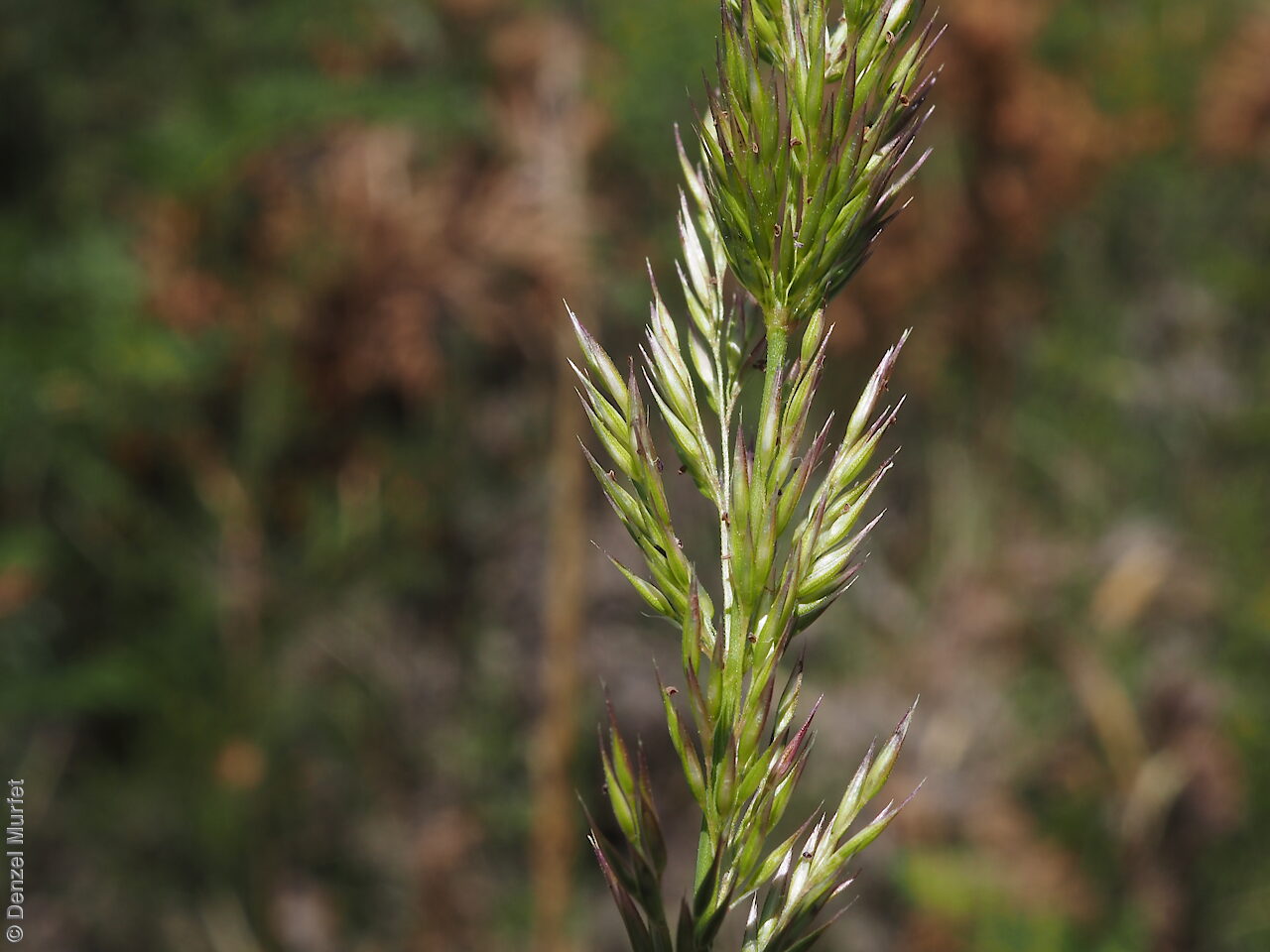
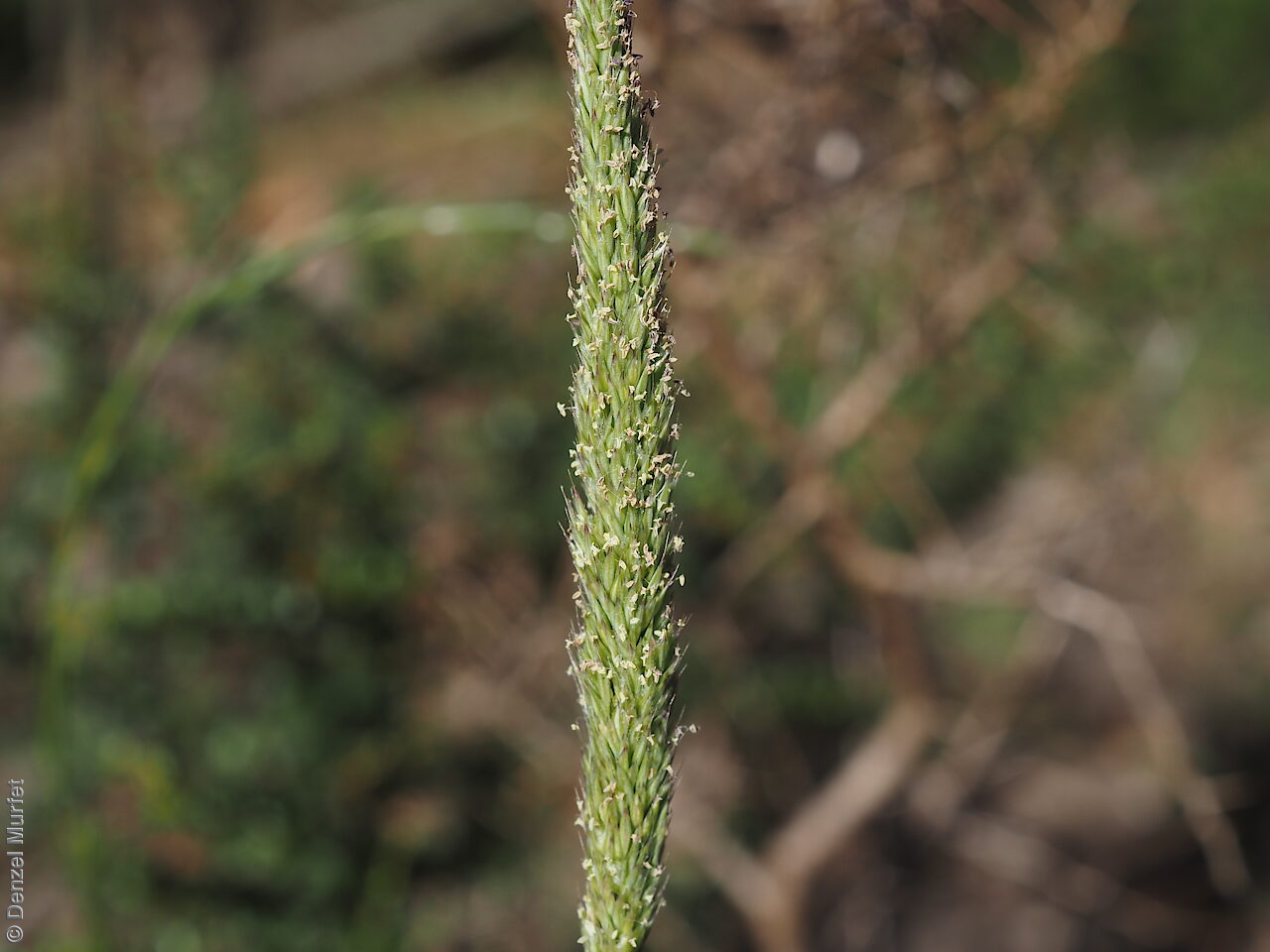
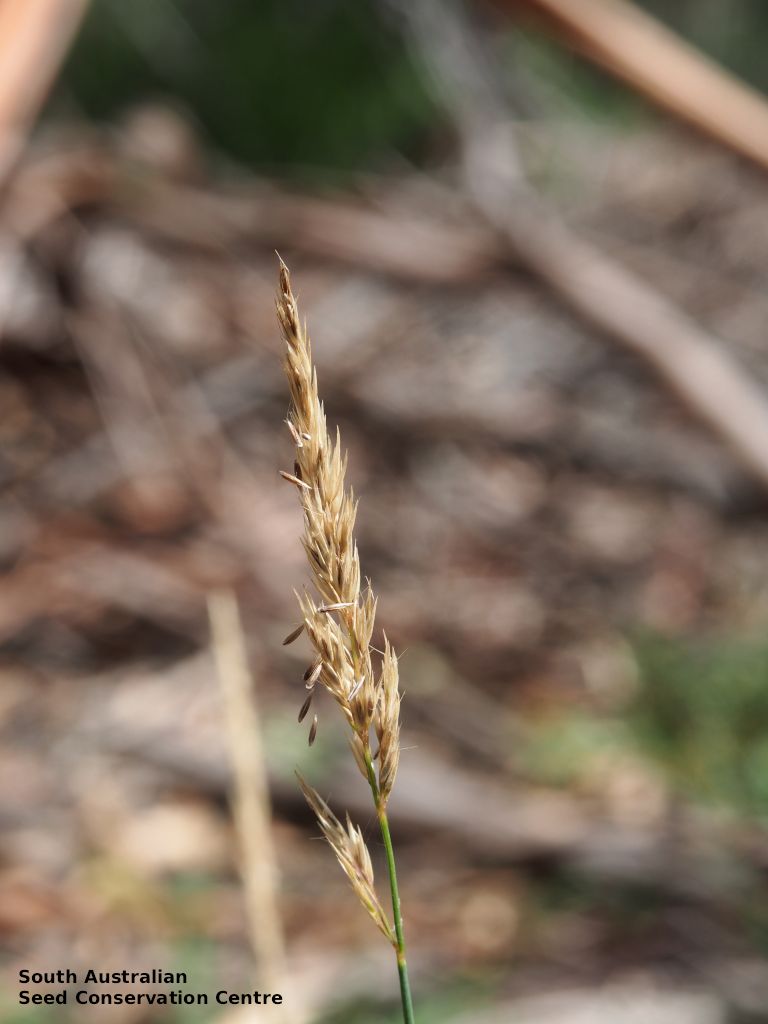
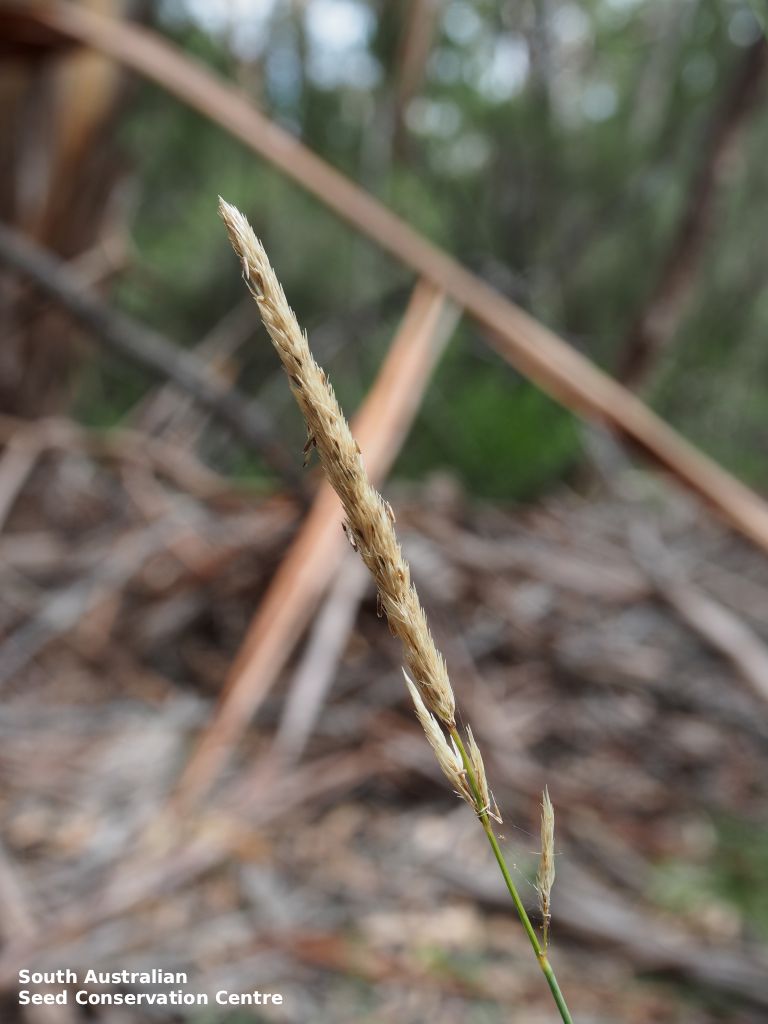
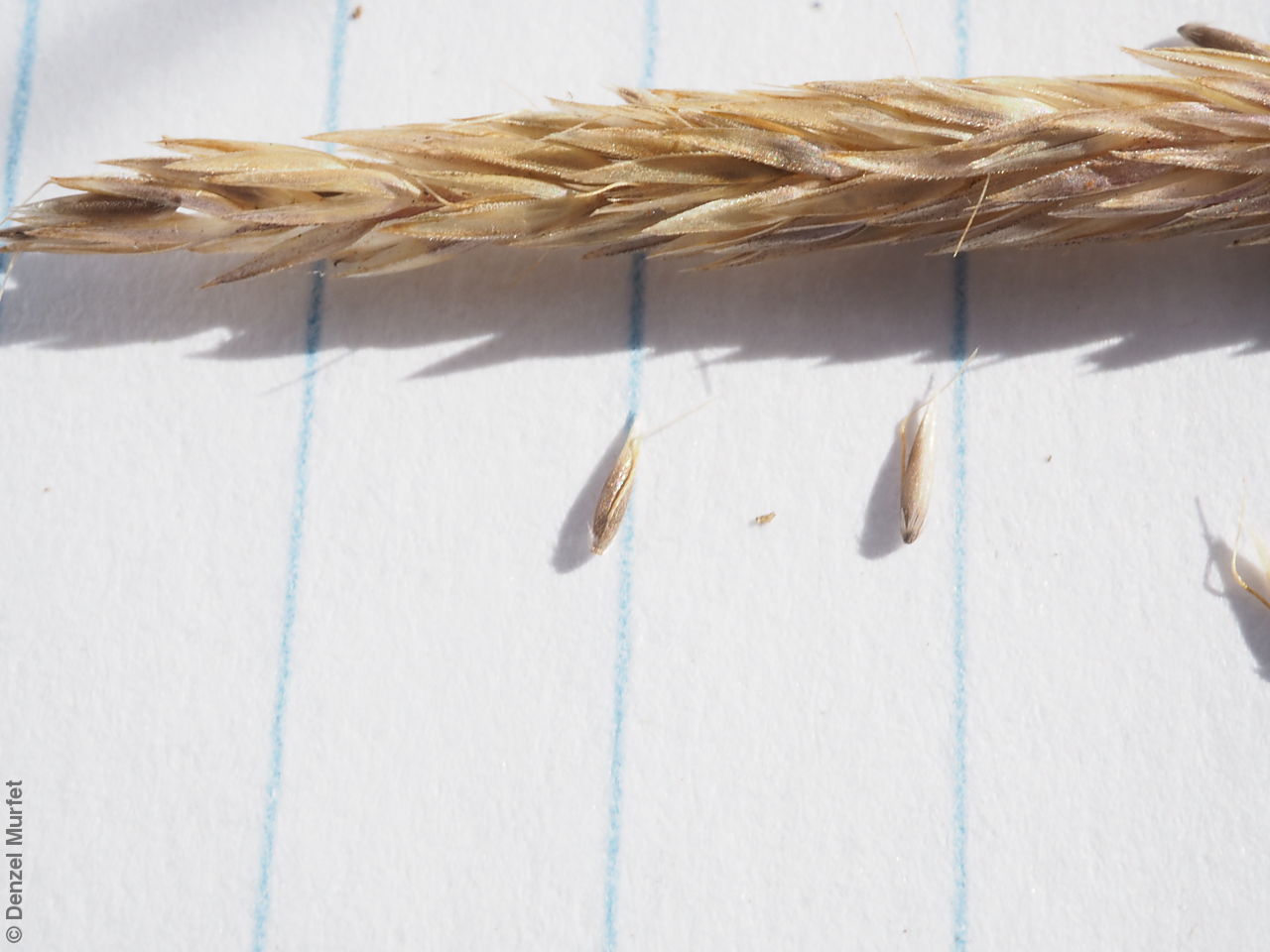
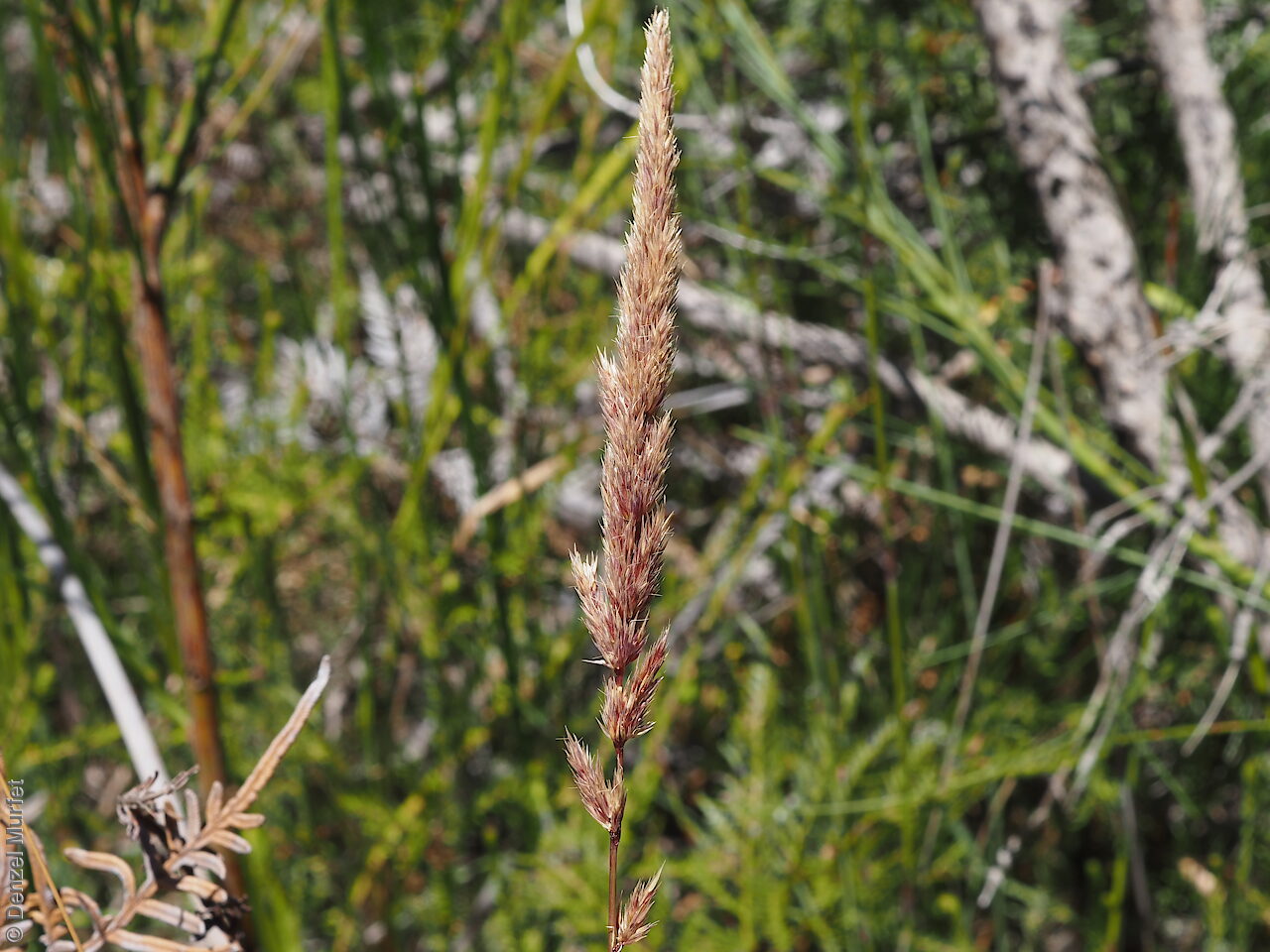

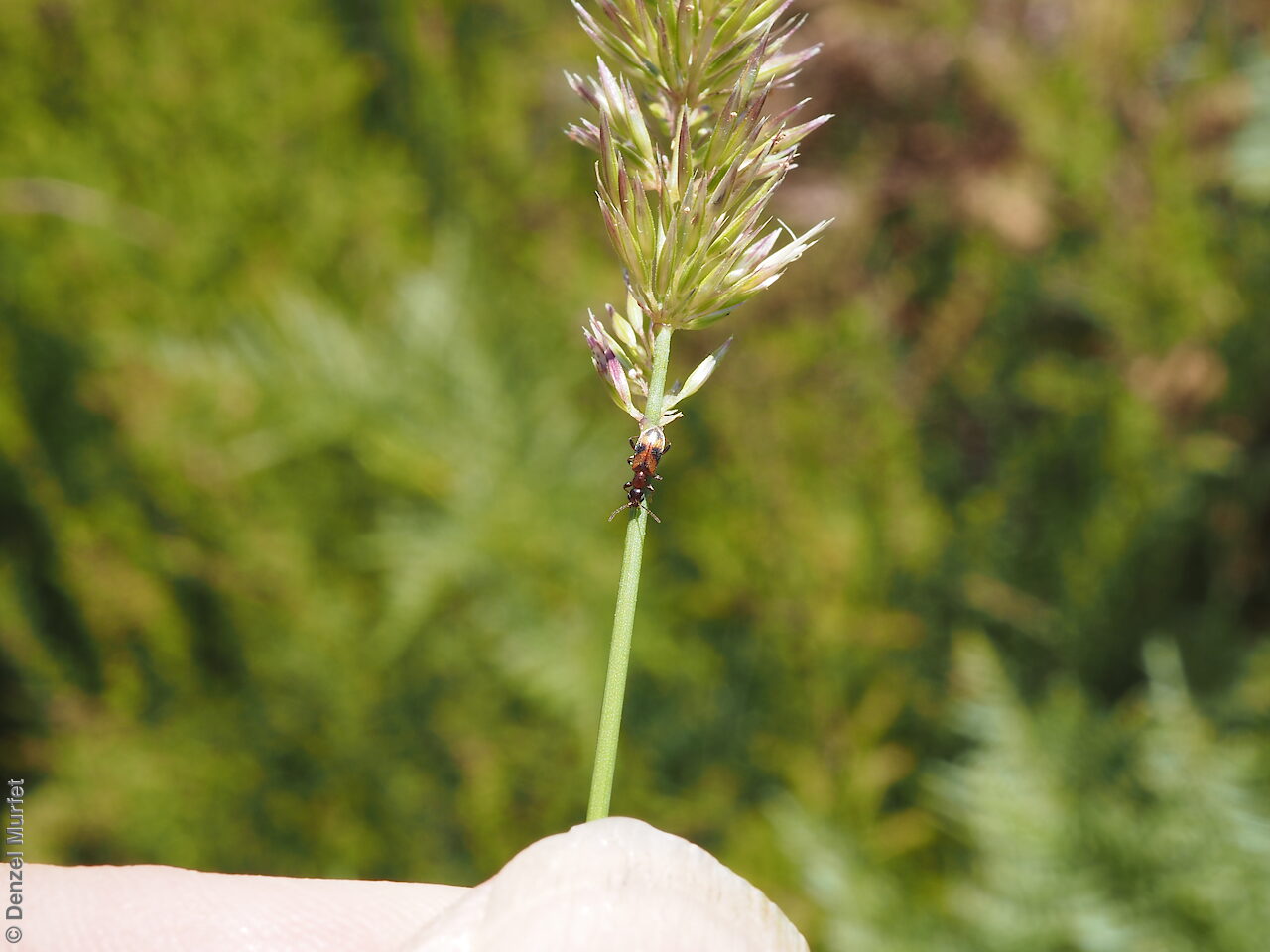
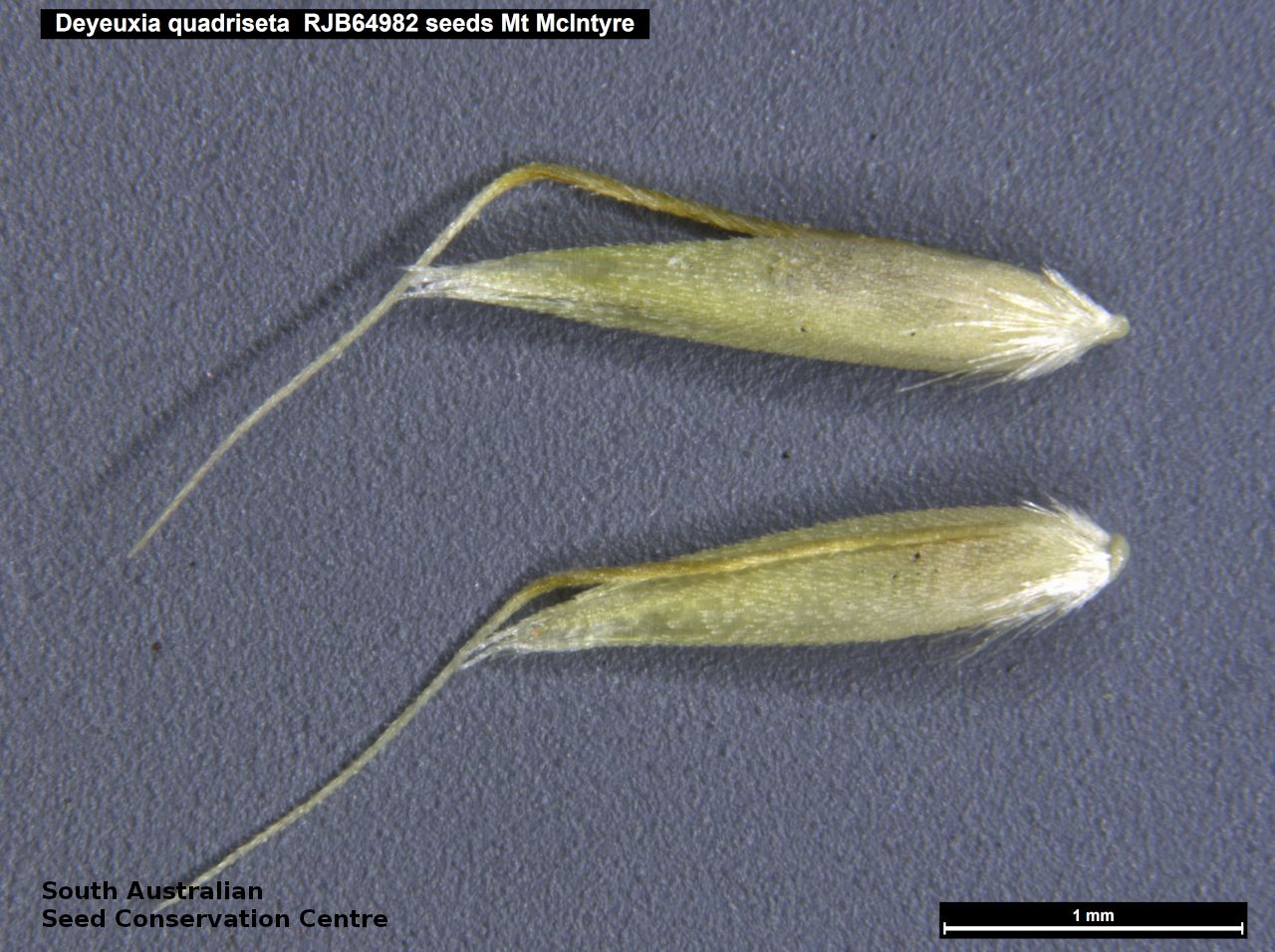
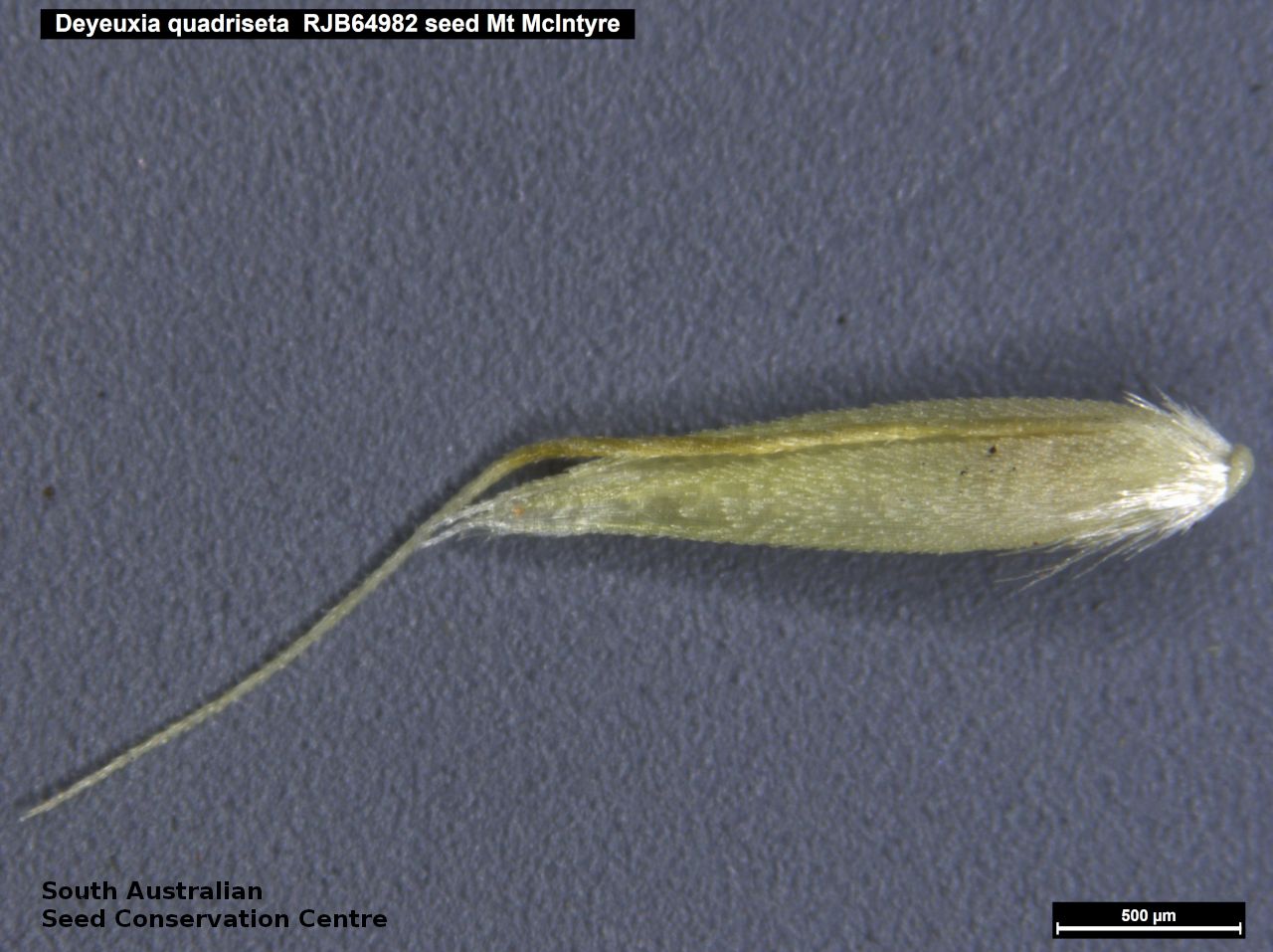
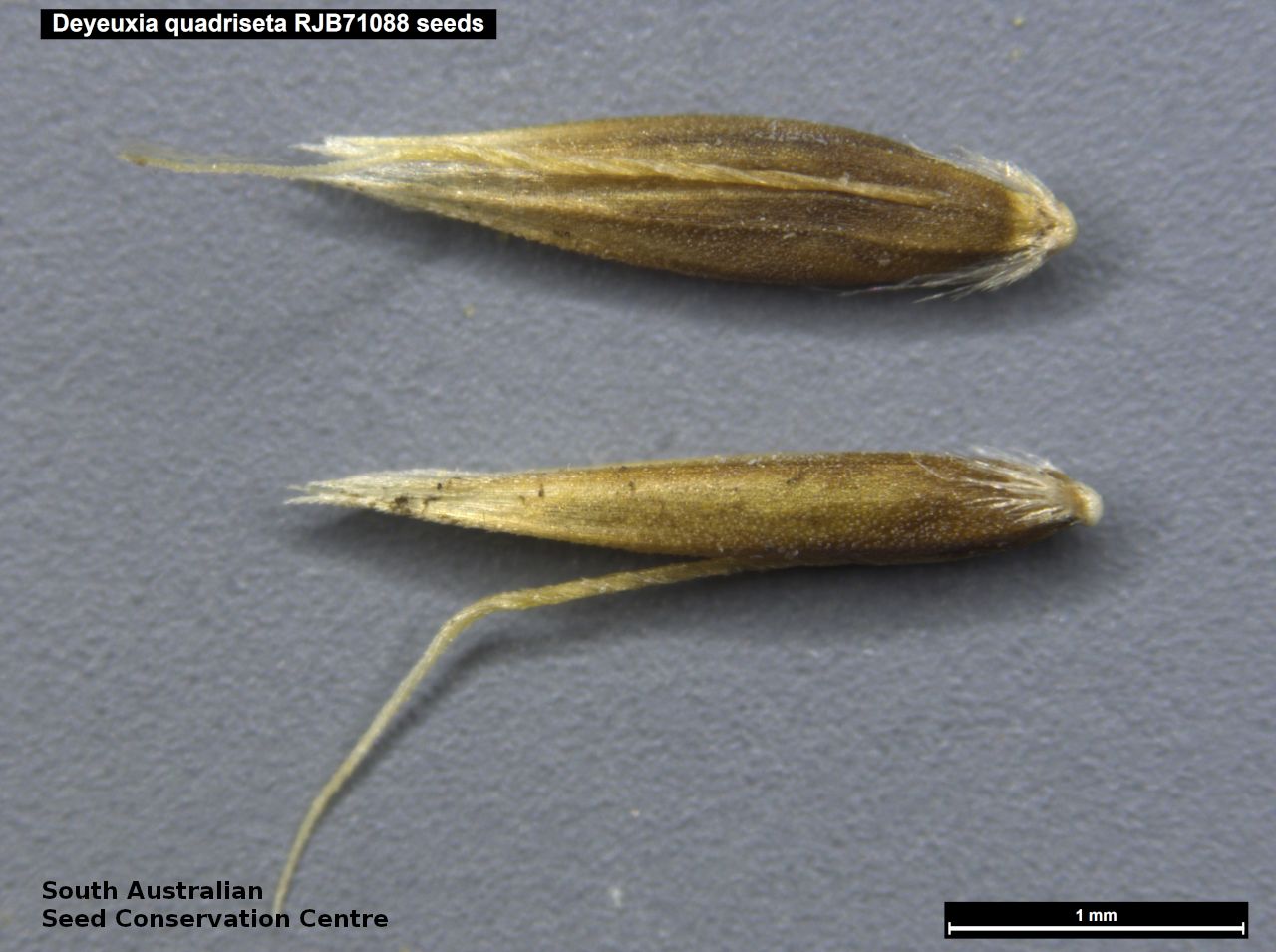
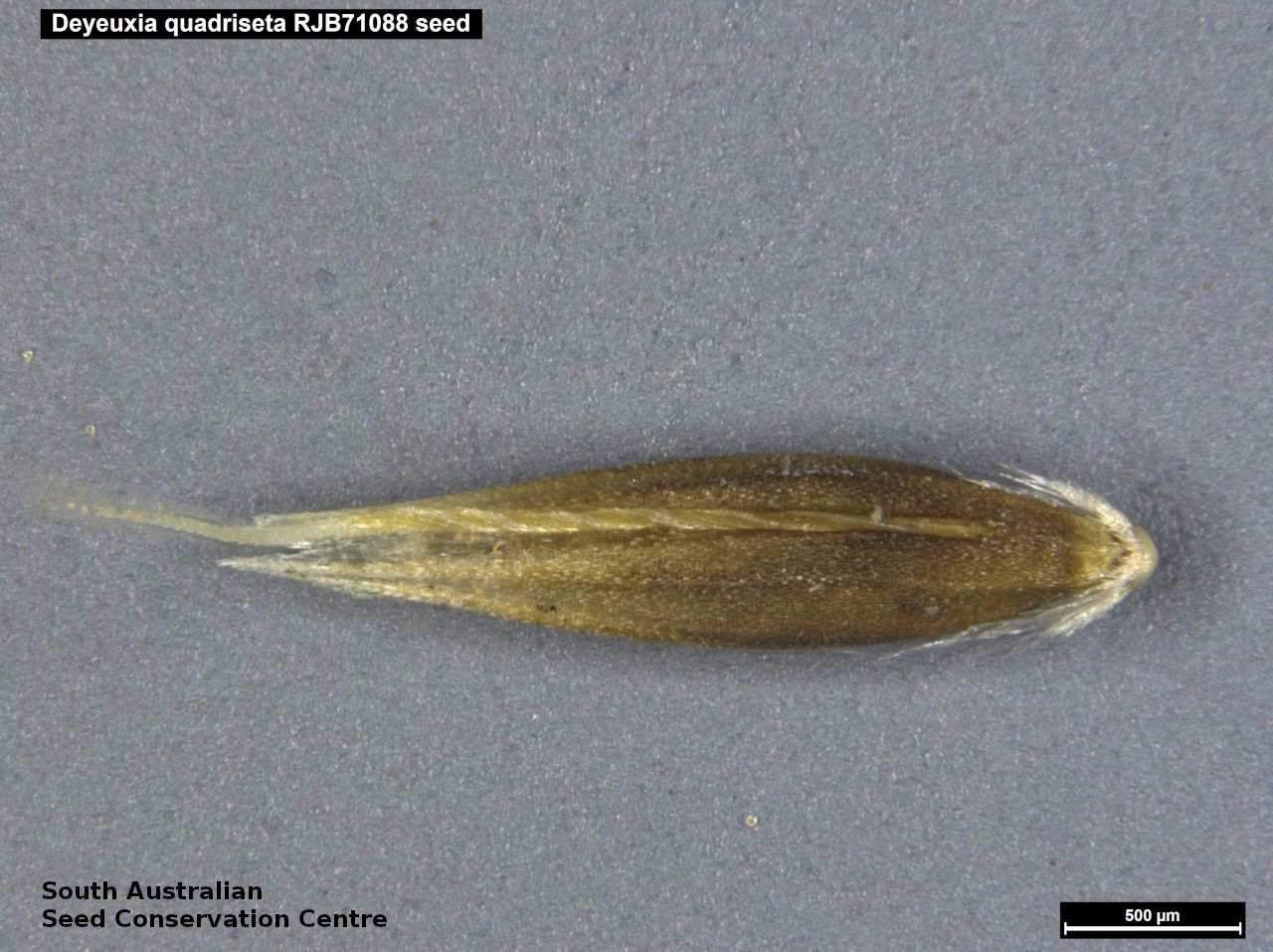
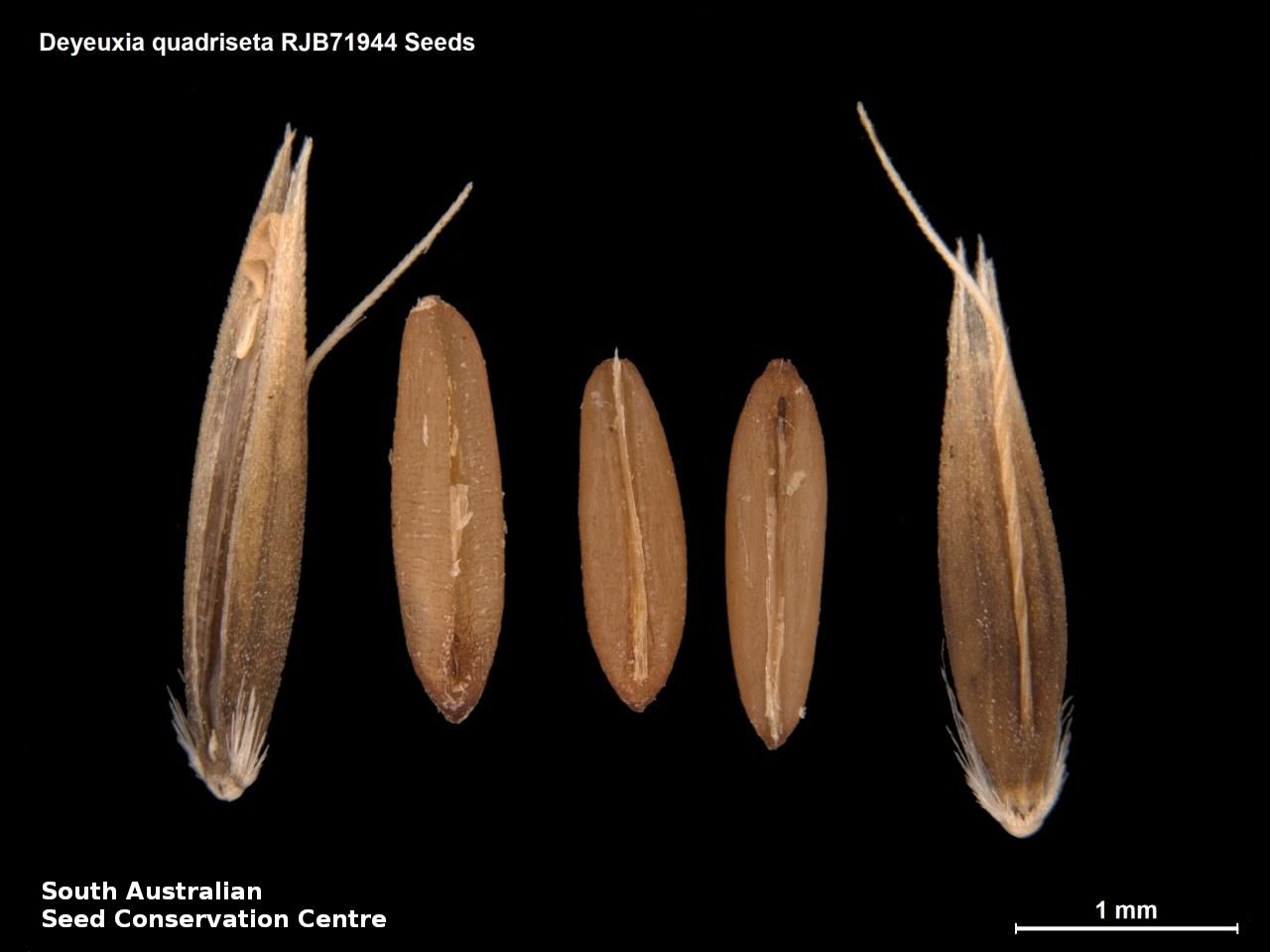

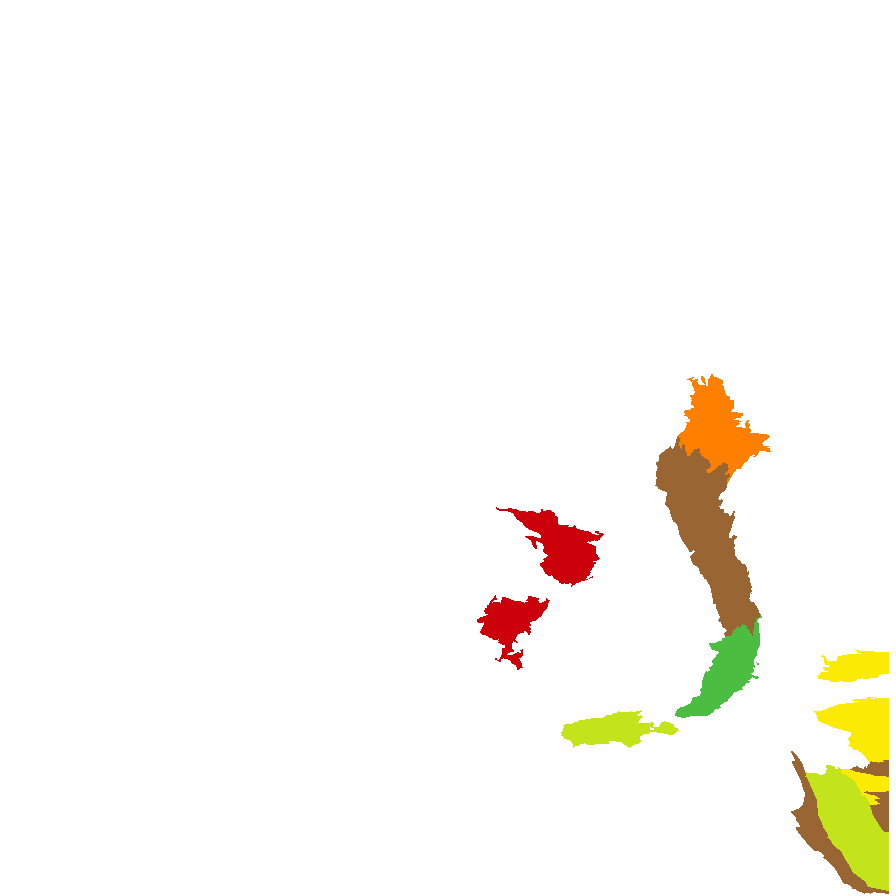
Botanical art
Prior names
Calamagrostis quadriseta
Avena quadriseta
Agrostis quadriseta
Etymology
Deyeuxia named after Nicolas Deyeux (1753-1837), a Professor at the School of Pharmacy and Faculty of Medicine, Paris. Quadriseta from Latin meaning four bristles, referring to the lemma having 4-toothed at apex.
Distribution and status
Found in the southern part of South Australia, from Port Augusta to the lower South-east growing in moist areas, by creeks and in swamps. Also found in Western Australia, New South Wales, Victoria and Tasmania (and New Zealand). Native. Common in South Australia. Common in the other States.
Herbarium regions: Flinders Ranges, Eyre Peninsula, Murray, Southern Lofty, Kangaroo Island, South Eastern, Green Adelaide
NRM regions: Adelaide and Mount Lofty Ranges, Eyre Peninsula, Kangaroo Island, South Australian Arid Lands, South Australian Murray-Darling Basin, South East
AVH map: SA distribution map (external link)
Plant description
Glabrous perennial grass to 1 m high with rigid stems having glabrous nodes. Leaves stiff, flat or finally inrolled, ligule long, truncate, glabrous. Flower-spike a dense cylindrical panicle, sometimes slightly branched to 15 cm long. Glumes narrow, acute, subequal to 5 mm long, the lower one slightly longer. Lemma shorter, usually minutely scabrous with 4-nerved and with 4 teeth, of which 2 are often longer. Awn almost basal, to 5.5 mm long, shortly exserted beyond the glumes. Tufts about half as long as the lemma and bristle absent. Flowering between October and May. Fruits are golden-brown compact long fruit-spike. Seeds are brown grain to 2 mm long and 0.5 mm wide. Seed embryo type is lateral.
Seed collection and propagation
Collect seeds between December and July. Use hands to gently strip seeds off the mature seed spike that are turning straw colour. Mature seeds will come off easily. Alternatively, you can break off the whole seed spike. Place the seeds/spike in a tray and leave to dry for two weeks. No further cleaning is required if only seed collected. If seed spikes collected, use hand to strip off the mature seeds. Store the seeds with a desiccant such as dried silica beads or dry rice, in an air tight container in a cool and dry place.
| Location | No. of seeds (weight grams) | Number of plants | Date collected | Collection number Collection location | Date stored | % Viability | Storage temperature |
|---|---|---|---|---|---|---|---|
| MSB | 6,800 (2.05 g) | 50+ | 13-Jan-2007 | RJB71044 Southern Lofty | 0% |
Number of plants: This is the number of plants from which the seeds were collected.
Collection location: The Herbarium of South Australia's region name.
% Viability: Percentage of filled healthy seeds determined by a cut test or x-ray.